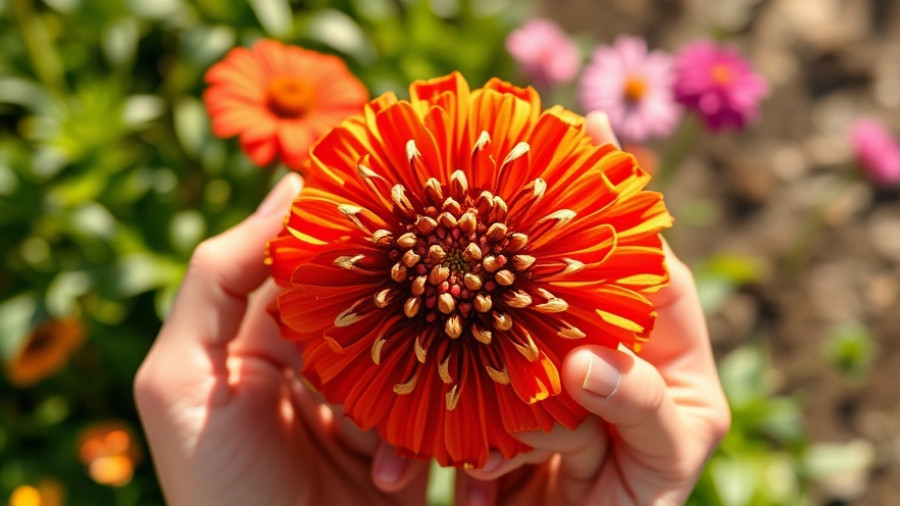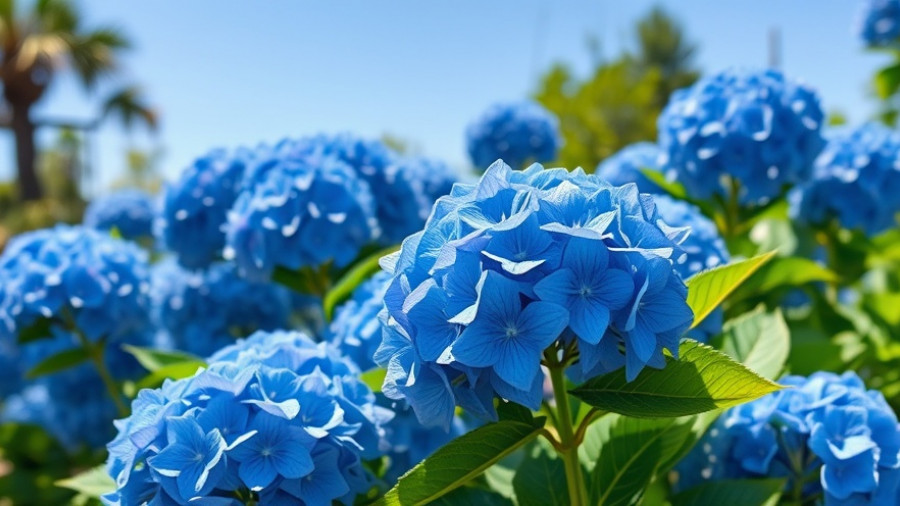
Are You Ready to Welcome Fall's Colorful Visitors?
As the warm days of summer give way to the crispness of autumn, nature prepares for a beautiful transformation. For butterflies, this change is critical. They gear up for migration or enter dormancy, much like a leaf transitioning to its fall colors. By planting specific seeds now, gardeners can play a vital role in supporting these migratory marvels. Let's explore how planting this fall not only beautifies your yard but nurtures butterflies, ensuring they thrive through the colder months.
Essential Flowers for Fall Butterfly Nutrition
Fall is a crucial time for the butterfly population as they feed heavily to build up energy reserves for their long journeys south. Certain late-blooming flowers serve as critical sources of nectar. Here are seven excellent seeds to sow now for the butterflies:
- Evening Sun Sunflower - Cheerful yellow blooms attract butterflies and serve as a visual delight in any garden layout.
- California Giants Blend Zinnia - These vibrant flowers offer a range of colors and provide essential food for various butterfly species.
- Apricotta Cosmos - Not only do these flowers bring beauty with their delicate petals, but they are also favorites of pollinators.
Understanding Butterfly Behavior as Seasons Change
It’s essential to acknowledge how various species cope with the changing climate. Monarch butterflies travel thousands of miles to their wintering grounds, relying on nectar-rich flowers during their journey or as they prepare for diapause. Other species like the mourning cloak find refuge in natural shelters, while swallowtails opt to produce new generations before winter.
By planting flowers with diverse bloom times, you're effectively creating a buffet for these pollinators throughout late summer and fall. Doing so ensures more butterflies return after the frost, enriching your garden with life year after year.
Tips for Supporting Your Local Butterfly Population
Enhancing your backyard can have adorable side benefits. Here are a few garden planning tips to setup the perfect environment for our fluttering friends:
- Native Plants: Incorporate native plants alongside these butterfly-attracting flowers, as they are easier to maintain and naturally suited for local pollinators.
- Host Plants: Recognize the specific species of caterpillars in your area, planting host plants for them to feed on and develop safely.
- Water Sources: Create shallow water areas with stones or pebbles to provide hydration for butterflies.
Creating a Butterfly-Friendly Landscape
While cultivating a butterfly haven, consider these eco-friendly yard care practices:
- Reduced Chemicals: Limit the use of chemical pesticides and herbicides to promote a sanctuary for butterflies.
- Natural Mulching: Use organic materials for mulching to retain soil moisture and encourage healthy plant growth.
- Forget the Lawn: Reducing the size of traditional lawns in favor of colorful flower gardens can boost biodiversity immensely.
Your Next Steps Towards Butterflies
Taking action is as simple as sowing a few seeds this fall! By selecting the right flowers and fostering supportive conditions in your yard, you can make a significant difference to the butterfly populations right in your community. With the right backyard makeover ideas, your garden can become a vital refuge—a beautiful amalgam of aesthetics and ecology.
Incorporate these plants into your fall gardening agenda, and witness the transformation in your outdoor spaces. Every little effort counts towards creating a vibrant ecosystem that will not only attract butterflies but enhance your community’s green space.
Your effort will yield not just beauty but will strengthen the bonds within your local environment as butterflies flourish among the blooms you've cultivated. It's time to gear up for a season of vivid colors and the gentle fluttering of wings!
 Add Row
Add Row  Add
Add 




Write A Comment